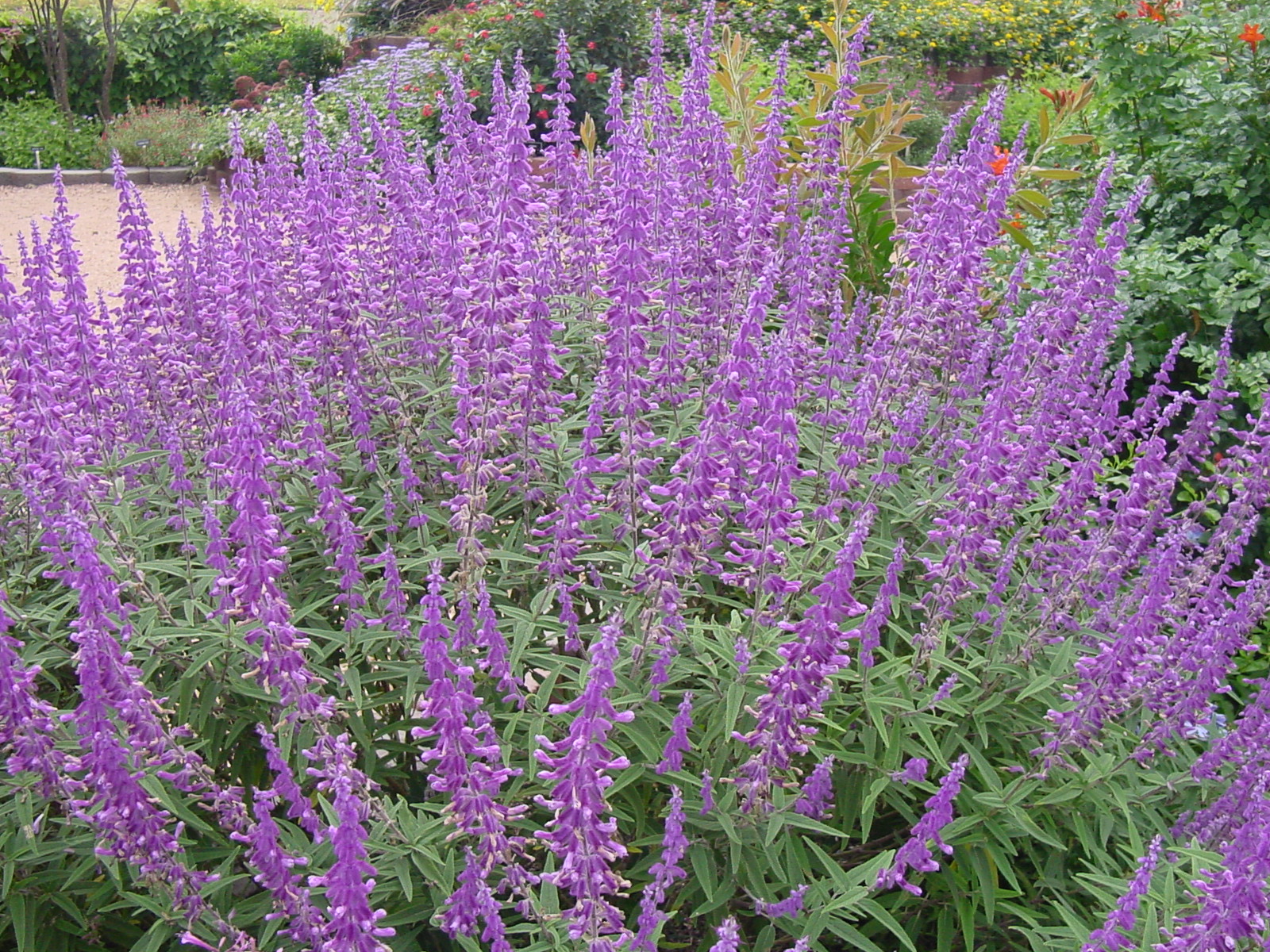

Grow Texas sage in a spot with full sun (at least 6 to 8 hours of direct sun each day). Our experts are happy to help! Or sign up for our email newsletter to get fresh gardening tips every month.

Because of its drought tolerance, Texas sage is often used in xeriscaping. It takes pruning well, if you wish, so you can also grow it in shrub borders or even with perennials and annuals. Its fine-textured foliage makes Texas sage a good hedge, accent plant, or foundation planting. In Zones 8-10 where it's hardy, plant it as an attractive shrub. The silvery foliage makes an elegant backdrop for just about any plant, including other heat-loving blooming tropicals, such as bougainvillea or mandevilla. Try Texas sage in container gardens on a hot, sunny deck or patio. It typically grows about 8 feet tall and 6 feet wide as a landscape shrub where it's hardy. You can often find this plant sold as a bushy shrub or pruned in standard form to look like a miniature tree. It grows well in containers, as well as garden beds and borders, so there are a number of ways to use Texas sage (also called Texas ranger) to add beauty to your outdoor spaces. The flowers attract bees, butterflies, and other polliantors. This North American native shrub (it hails from areas in Texas and Mexico) features gorgeous silvery foliage and attractive lavender-purple flowers on and off from spring, through the summer, and into autumn. Grow Texas sage (Leucophyllum frutescens) in your yard for lots of easy-care beauty.


 0 kommentar(er)
0 kommentar(er)
